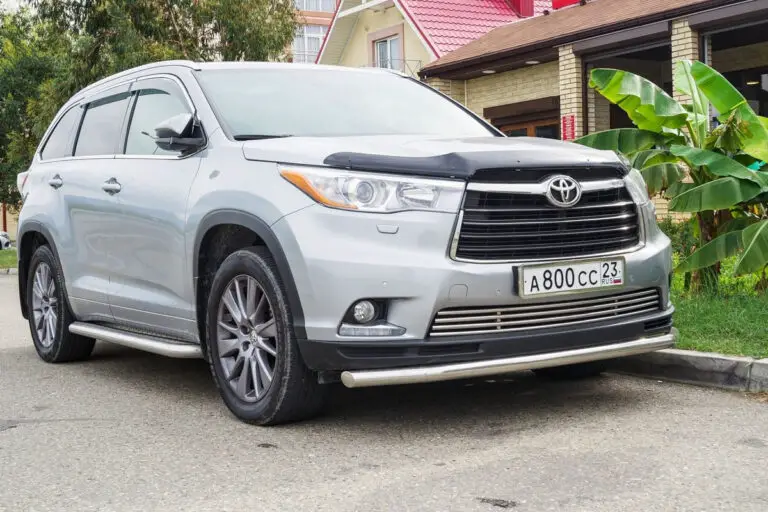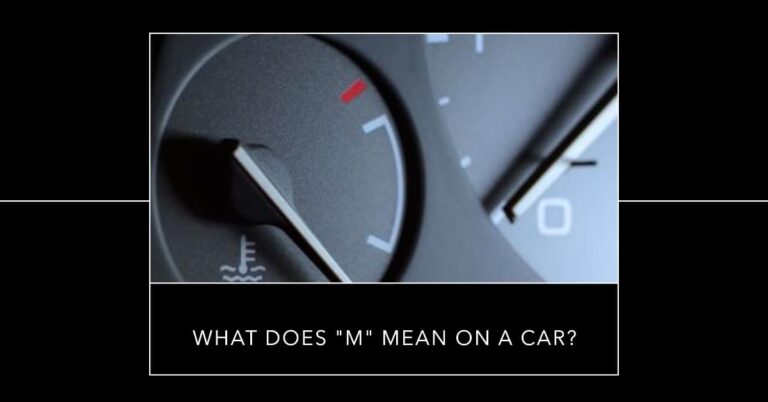What’s The Best & Worst Toyota Prius Year? (Answered)

The Toyota Prius is one of the most iconic and well-known hybrid cars ever made. As gas prices fluctuated over the past two decades, the Prius remained a flagship model for affordable, economical transport.
The best Toyota Prius years offer improved performance, tech features, and value retention, while the worst suffer from reliability issues, inferior quality, and fast depreciation.
In this comprehensive guide, we’ll compare Prius specifications, pros, cons from all generations and identify both the dream Prius years as well as those best avoided. Key factors weighed include fuel economy, interior features, dimensions, engine power, and expert assessments.
Table of Contents
Toyota Prius Overview
As one of Toyota’s most memorable models, the Prius changed perceptions of what a fuel-efficient vehicle could be. The distinct hatchback body and hybrid powertrain make the Prius easy to recognize even 20 years later.
Launched in Japan in 1997 before becoming available worldwide by 2001, the first-generation Prius was modestly powered and barebones yet achieved an EPA rating of 52 mpg combined — almost double comparable sedans. This demonstrated the possibilities of hybrid technology to reduce emissions and operating costs.
The Prius was marketed heavily to young urban professionals seeking an affordable, eco-conscious car with all the latest gadgets. By the second generation (2004-2009), the Prius could drive solely on electric power and doubled fuel economy to 46/43 mpg city/highway.
The addition of more space, safety features, and tech solidified the Prius advantage. With celebrities like Leonardo DiCaprio embracing the Prius phenomenon, sales skyrocketed. By 2012 Toyota had sold over 3 million globally.
Now in the fourth generation, the Prius still leads in fuel efficiency but faces growing competition from all-electric rivals. Yet thanks to improved driving dynamics, striking colors, and a roomy interior, the Prius remains a statement small hybrid.
Best Toyota Prius Years
Which are the most outstanding Prius editions over the decades? Here are our picks for the definitive dream Prius years:
2010 Prius
With freshened exterior styling and measurable performance gains, the 2010 Prius stands out as a milestone year as Toyota’s hybrid tech hit its stride. Most importantly, fuel economy improved to 51/48 mpg city/highway thanks to the clean-sheet Prius III redesign.
This third generation introduced important advances underhood:
- More powerful 1.8L four-cylinder engine with greater torque. Net hp grew to 134 horsepower.
- Revised battery pack with improved temperature regulation for longer life.
- AC voltage boosted to 500V enabling a beefier electric motor.
- Electronically controlled Continuously Variable Transmission (eCVT) helps transfer torque effectively at highway speeds — reducing noise and vibration.
Daily driving benefits were equally impactful thanks to:
- A stiffer chassis and suspension calibrations that heighten stability and handling confidence, along with less road noise.
- Upgraded interior materials and insulation for a quieter ride.
- Space increases for easier passenger and cargo-loading access.
With bolder exterior options from fiery red to swaying blue hues, the 2010 Prius combines livelier drivability with all the core hallmarks owners expect.
2015 Prius
The 2015 Prius tweaks build on the major 2010 redesign to offer a more polished, premium driving experience alongside the brand’s leading fuel efficiency.
Subtle visual changes like redesigned LED rear lamps and front grilles modernize the Prius profile and luxury range. Inside, a color head-up display (HUD) keeps vital data easily glanceable while preventing driver distraction.
2015 additions also dial-up driving confidence:
- Enhanced handling and steering reduce body roll through turns and improve high-speed stability.
- Updated suspension components curb impact harshness and vibration over bumps.
- Improved braking modulation allows smoother stops with less effort.
With multiple information screens, keyless access, and a backup camera standard, the 2015 Prius prioritizes both safety and multimedia versatility. It reflects how Toyota hybrid can seamlessly meld green credentials with modern amenities.
2017 Prius
The 2017 Prius stands out as the first model year showcasing Toyota Safety Sense — an integrated bundle of active driver aids and crash protection features.
These include:
- Pre-Collision System with Pedestrian Detection spots obstacles at lower speeds and applies emergency braking.
- Lane Departure Alert and Assist detects drifting over lines and nudges back into the correct path.
- Full-Speed Dynamic Radar Cruise Control maintains pace behind other vehicles down to a stop.
- Automatic High Beams toggle between high and low as surrounding traffic allows.
With Toyota prioritizing democratized safety, all Prius trims from 2017 onward feature this tech suite as standard.
Aside from the safety upgrade, another battery architecture rework helps the 2017 Prius increase fuel figures to 52/50 city/highway mpg — a new high. The revised lithium-ion assembly manages heating issues better, avoids overcharging, and reduces environmental impact in manufacturing. It’s a prime example of continuous efficiency gains across Prius generations.
Worst Toyota Prius Years
Which model years are most prone to problems or fail to move the Prius ownership experience forward? Here are our nominations for the least desirable used Prius picks:
2001 Prius
As the debut Prius brought stateside, the 2001 inevitably suffers from typical first-generation growing pains. With relatively primitive petrol-electric hybrid tech paired to a tiny powertrain, performance shortcomings included:
- Underpowered 1.5L Atkinson-cycle engine generating just 58 hp. Moving from 0-60 mph took a languid 16+ seconds.
- Modest interior room and uncomfortable rear seats.
- Limited connectivity capabilities and electronic conveniences. No camera or parking sensors.
- Reliability issues like drive belt and inverter failures spotted among early owners.
First out the gates, the trailblazing 2001 Prius works best as a city runabout. With used prices lower, its appeal lies mainly as an inexpensive entry point into hybrid ownership.
2011 Toyota Prius
The 2011 Prius amounts to an unchanged carryover after the full model makeover seen in 2010. As a result, it lacks any substantive improvements in drivability, interior quality, or features.
But as supply issues hampered production, used prices today fail to reflect its stagnation. Compared to earlier years, the 2011 Prius suffers from:
- Lower reliability and owner satisfaction results recorded in surveys.
- Often priced on par with the appreciably improved, in-demand 2010 edition.
- Dated multimedia and audio with no Apple CarPlay/Android Auto.
With the third-gen Prius enhancing comfort and refinement in almost every area just a year later, the stale 2011 iteration leaves buyers wanting more. Shoppers stand to gain better long-term ownership value from either the year before or after.
2019 Toyota Prius
The current fourth-generation Prius has much strength over earlier versions — except for the latest 2019 redesign. Toyota’s styling changes negatively impact rear seat room and trunk space. Key interior dimensions shrink versus 2018, including:
- Rear legroom drops by 2.5 inches.
- Rear headroom declines by around 1 inch.
- Cargo room behind rear seats loses ~3 cubic feet — now 19.8 cu. ft. total.
2019 also sees the dual rear tailpipe deleted for a single pipe exit, slightly reducing curb appeal.
While accelerating and handling remain punchy with 121 combined net hp, the 2019 redesign’s tight packaging presents some ergonomic and practicality compromises. Small yet impactful comfort and capacity losses diminish its appeal.
Toyota Prius Spec Comparison by Year
How do key specifications and ratings stack up across Prius generations? This table outlines key stats in fuel efficiency, performance, dimensions and prices:
| Specification | 2001 | 2010 | 2015 | 2019 |
|---|---|---|---|---|
| Combined MPG (city/hwy) | 41/41 | 50/49 | 50/49 | 56/53 |
| Engine | 1.5L 4-cyl hybrid | 1.8L 4-cyl hybrid | 1.8L 4-cyl hybrid | 1.8L 4-cyl hybrid |
| Horsepower | 58 hp | 98 hp | 95 hp | 121 hp |
| 0-60 mph | 16.1 sec | 10.4 sec | 10.0 sec | 9.8 sec |
| Length | 175 in | 175 in | 183 in | 178 in |
| Width | 67 in | 68 in | 69 in | 70 in |
| Wheelbase | 106 in | 106 in | 106 in | 106 in |
| Base MSRP | $19,995 | $21,925 | $24,635 | $24,525 |
Reviewing the specs side-by-side shows evolutionary refinements in power, efficiency, size and pricing across the Prius timeline. Most years enjoy minor progressive gains as updated hybrid tech and platforms mature. Small performance and measurement discrepancies reflect tweaked component sizes and positions.
Clearly the 2010 and 2015 generations demonstrate Toyota’s more ambitious redesign efforts to improve Prius capabilities inside and out. From interior SPACE to fuel ECONOMY to safety innovations, they represent the peaks of Prius potential.
Pros of Owning a Toyota Prius
Given near-universal Prius name recognition, what convinces buyers to pick this eco-minded hatchback over SUVs and other hybrids?
Outstanding gas mileage sits at the heart of Prius appeal along with low emissions output. Even base Prius trims achieve EPA ratings no competing conventional vehicle can match. By keeping revs low through ingenious transmission software, its small engines squeeze every last mile from each gallon.
Dramatically lower fuel costs over years of ownership directly save households money. Less gasoline burned also wins points from environmentalists as one of the “greenest” mass-production vehicles sold globally.
Beyond hypermiling bragging rights, the Prius impresses across other ownership pillars:
- Affordable pricing similar to compact cars but with no compromise on features or space. Tax incentives and an eco-image further discount realworld costs.
- Proven reliability thanks to decades of robust hybrid powertrain development and refinement by Toyota engineers.
- Among the highest resale values in its segment — holding 50% or more after 5 years depending on options.
- A quiet, comfortable ride from the smooth CVT transmission and well-dampened suspension. Passengers enjoy low noise levels more akin to luxury cars.
- Strong safety scores and collision protection with eight standard airbags and available active driving aids.
For cost-conscious shoppers doing their homework, the Prius offers an optimal blend of practicality and advanced technology for daily commuting duties and beyond.
Cons of Owning a Toyota Prius
The Prius ownership proposition looks rosy from most angles — but it isn’t perfect. Several compromises result from chasing maximum mpg over driving excitement or cargo flexibility inherent to its hybrid hatchback layout:
- Relatively poor acceleration with a 0-60 mph time over 10 seconds due to the weak gasoline engine relying heavily on electric support. Merging and passing require planning ahead.
- Loud engine drone and motor whine under high sustained speeds, especially with the accelerator floored. Open-road cruising noise exceeds traditional cars.
- Mediocre high-speed handling and body control through winding routes or tight turns. Prius models emphasize ride comfort over sharp reflexes.
- Spongy brake pedal feel makes smooth stops tricky for some drivers. Regenerative braking contributes to the inconsistent sensation while capturing energy.
- Thick rear pillars and a sloped rear window limit rear visibility. Monitoring traffic behind needs more diligence.
- The sloped hatchback shape also restricts cargo room despite fold-down rear seats. Carrying long or bulky items may require a roof rack.
While no deal-breakers for most commuters, these performance and practicality tradeoffs are worth noting if higher speeds or luggage capacity are important. Test drives help set expectations.
Is the Toyota Prius Right For You?
If you’re shopping for an efficient small vehicle that keeps money in your wallet without sacrificing comfort or features, the Prius merits strong consideration.
Ideally matched for:
- City-dwellers wanting a compact car with maneuverability and tech.
- Suburban commuters racking up miles on stop-and-go highways.
- Rideshare drivers maximizing fares and minimizing fuel costs.
- Motorists valuing proven dependability and affordable ownership.
- Eco-conscious buyers seeking to reduce their transportation footprint.
Withsavings from 50+ mpg and lower maintenance costs, the Prius wins praise as an accessible gateway into hybrid driving. It eases worries over rising gas prices while seating five comfortably.
Boasting two full decades of mass electrification knowledge, Toyota now offers the Prius in six trim levels from eco-minded base spec to near-luxury touring. This broad model range leaves few buyer needs unanswered.
Our recommendation lands on shooting for 2010-2017 model years to enjoy the highest fuel economy alongside the latest tech and safety extras — all while avoiding initial depreciation. These provide that ideal blend of value, features and MPG boosting potential that define the Prius advantage.
Conclusion
The Toyota Prius has come to define hybrid transportation since its 1997 launch. Now an icon for eco-friendly mobility and technical innovation, it enters a fifth generation more stylish and refined than ever.
Among two decades of production, our picks for best Prius years remain the 2010 and 2015 generations where redesigned models achieved maximum mpg — nearing 50 combined — alongside handling and multimedia upgrades that improved daily liveability. They’re followed closely by 2017 thanks to the valuable Toyota Safety Sense introduction.
Conversely our nominees for least desirable models center on the aging inaugural 2001 Prius, the unchanged 2011 edition lacking improvements, and the newly redesigned 2019 with slightly reduced interior room.
While not the most thrilling vehicle to speed down backroads, the Prius wins on sheer uncompromised practicality as urban transportation. With unbeatable gas mileage under $30k, used Prius models continue offering some of the most compelling and economical mobility on the market when chosen wisely. Test drives can help buyers identify which generation best fits their needs.






